Welcome to the summer American Astronomical Society (AAS) meeting in San Diego! A team of astrobiters is attending the conference this year, and we will report highlights from each day here on astrobites. If you’d like to see more timely updates during the day, we encourage you to follow @astrobites on twitter or search the #aas228 hashtag. We’ll be posting twice a day during the meeting, so be sure to visit the site often to catch all the news!
The Limits of Scientific Cosmology: Setting the Stage: Accepted Facts, and Testing Limitations in Theory and Data (by Gourav Khullar)
With a stellar lineup of speakers to talk about current and future prospects of cosmology and its limits (or lack thereof), the first session kicked off with talks by Risa Wechsler, Joseph Silk, and Sean Carroll (his talk on Multiverses is described below, by Nathan Sanders). Risa set the stage with an elaborate description of the current accepted facts in the era of precision cosmology including the standard model of concordance cosmology, described by seven parameters and an accepted Lambda-CDM paradigm (with a cosmological constant and cold dark matter). The talk stressed on the fact that all these parameters are understood to a percent order precision, which is a remarkable deviation from the time in 1990s when according to Risa, “Alan Guth never thought that any of these numbers could be measured precisely!”
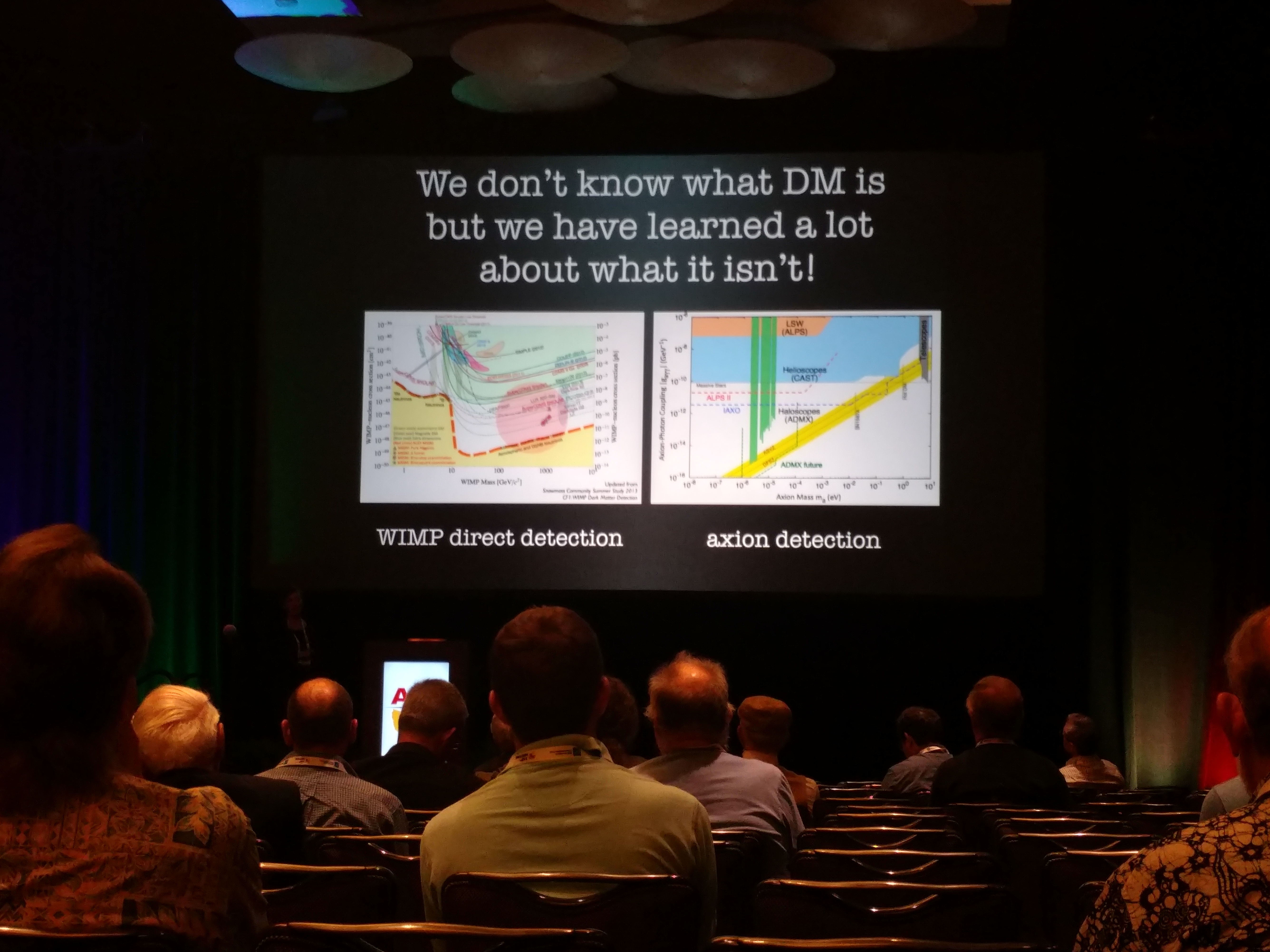
Risa Wechsler describing our current constraints on what Dark Matter could constitute.

Joseph Silk discussing limits on cosmological parameters.
The CMB measurements, Big Bang Nucleosynthesis estimates and galaxy clustering statistics all contribute to locking down the description of our universe. She emphasized on the tensions between different probes to measure expansion rate H0 of the universe, and small scale predictions of cold dark matter simulations, but she is hopeful that these shall be resolved eventually. Joe Silk followed this up with his interpretation of trying to understand our place in the universe and placing limits on different parameters and scales that we measure, ranging from star masses to dark energy scale estimates.
By invoking the anthropic principle, Silk pointed out that perhaps multiverses could offer a potential solution to certain causes of concern in our current models. The future looked good, and according to Silk, a better characterization of non-gaussianities using powerful simulations and precise CMB measurements is the way to go.
The Limits of Scientific Cosmology: Normal Science in a Multiverse (by Nathan Sanders)
Slotted into the “contrarian” slot of this special session on the limits of cosmology, Sean Carroll (Caltech) made a powerful argument for the normalcy of the multiverse prediction of inflationary and other theories of cosmology. While other scientists, including earlier speakers in the session, suggested that the intense difficulty of collecting data directly testing the multiverse prediction disqualifies it as a “scientific” theory, Carroll argued that this is no different from the reality of the scientific process applied generally. He combats the absolutist interpretation of Karl Popper’s writing on demarcation, which implies that only imminently-falsifiable theories qualify as “scientific.” Instead, he points us to abduction as the fundamental motive of science, the idea that we seek to move towards the model that best explains the available evidence, closely related to Bayes’ theorem. He acknowledged that we may never collect enough evidence for our credence in the multiverse to converge to one, and yet it may definitely be true. While he puts his own credence in the multiverse at “about 50%,” Carroll concludes that we should not reject the possibility of the multiverse out of hand solely on the basis of philosophical arguments.
Surprisingly, Carroll also comments that evidence can include both data and theory, specifically new interpretations of old ideas and new predictions. For example, Einstein did not make new observations of the precession of Mercury to lend credence (in the scientific sense) to his then-new theory of general relativity. Instead, he applied his theory for the first time to the orbit of Mercury and demonstrated that it explains existing facts. In the same way, we may add or remove credence from the multiverse theory even without newly collected measurements on directly testable predictions.
Plenary Session – APOGEE: The New View of the Milky Way (by Nathan Sanders)
Jo Bovy (Toronto) spoke about a bevy of recent discoveries by the APOGEE team, which has collected half a million spectra of red giant stars throughout the Milky Way disk. Bovy emphasized APOGEE’s unprecedented scope, covering close to half of the Milky Way disk and ranging ~10 kpc in radius, rather than the tiny neighborhood around the sun that most historical stellar surveys have probed. Overcoming the challenges of galactic extinction, the APOGEE team has made the most precise measurement of the circular rotation velocity of the MIlky Way disk, v_c = 218 +- 6 km/s, and produced remarkable results on the chemical evolution history of the Galaxy. In particular, they have shown that the star formation and chemical evolution history of the Galaxy seems to be remarkably constant throughout the disk. However, the radial migration of stars, which follows a non-circular orbit across the Milky Way’s spiral structure, causes mixing that makes the distribution of stellar parameters look uneven. Bovy also emphasized the importance of open science, sharing data and code related to their work. Like all SDSS data, the APOGEE spectra have been released publicly, and all their software pipelines and stellar models have also been made public. Coming next is an APOGEE-2 survey of the Southern sky, a copy of the instrument to be installed at the DuPont telescope in Chile.
Afternoon Press Conference – Dark Skies, Aliens, and the Multiverse (by Chris Faesi)
Tuesday afternoon brought another press conference to the AAS 228th meeting, this one taking us beyond the benign realms of planets, stars, and galaxies to Dark Skies, Aliens, and the Multiverse.
First, Eric Craine of STEM Lab, Inc. unveiled a new tool, the LANI (Light at Night Index), for measuring light pollution across a comprehensive sample of US communities: Using satellite data, LANI provides an estimate of the lighting efficiency in each US community having more than 500 people (comprising 19000+ cities and towns in total). The score incorporates the measured radiance (brightness), taking into account the number of people, the number of housing units, and the community area, and is then normalized to be between 1 and 100. LANI can be used to assess where additional efforts are needed to improve energy efficiency and reduce light pollution, as well as to track changes in infrastructure and population over time. Read more about the LANI here.Next, Evan Solomonides, an undergraduate student at Cornell University, presented a probabilistic analysis of the Fermi Paradox, the famous statement that asserts that if life is common in the Universe (as many believe), we should have detected it by now. The basic takeaway from his work is that while we’ve been sending powerful radio transmissions into space for the last 80 years, the volume of space reached by these transmissions is incredibly insignificant (perhaps 10 parts per million) compared to the size of our galaxy. If similar civilizations to ours have cropped up across the Milky Way and had even significantly longer timescales over which to send out signals, it is actually not surprising that we haven’t seen them yet, simply by virtue of the vastness of space. Solomonides predicts that it will be about 1500 years before it is probabilistically favorable to detect extraterrestrial civilizations, based on these assumptions.
Finally, cosmologist and science communicator extraordinaire Sean Carroll zoomed the focus out beyond the galaxy, beyond the observable universe, to the basic question of what it even means to do science in a multiverse. Carroll argued that even if a scientific theory is unable to be directly tested, it should not be automatically discarded as impossible or irrelevant. One cannot definitively prove that beyond the observable universe lie regions of space that have vastly different physical properties or cosmologies – in other words, the existence of a multiverse – and so this possibility should at least be philosophically considered by scientists, and the potential influences that the multiverse would have on the observable universe should be looked for.
Classification and Properties of Variables, Binaries and White Dwarfs and Stellar Evolution (by Ashley Villar)
In this era of big data, our ability to classify the plethora of celestial objects we detect is essential to our science. Gideon Bass began this session by discussing his work in using machine learning to classify Kepler variable stars. Bass ties together many machine learning algorithms to create a “Frankenstein” method to maximize accuracy. At higher energies, Saeqa Vrtilek discussed the use of color-color-intensity diagrams in X-ray wavelengths to classify objects such as cataclysmic variables, black holes and neutron stars.
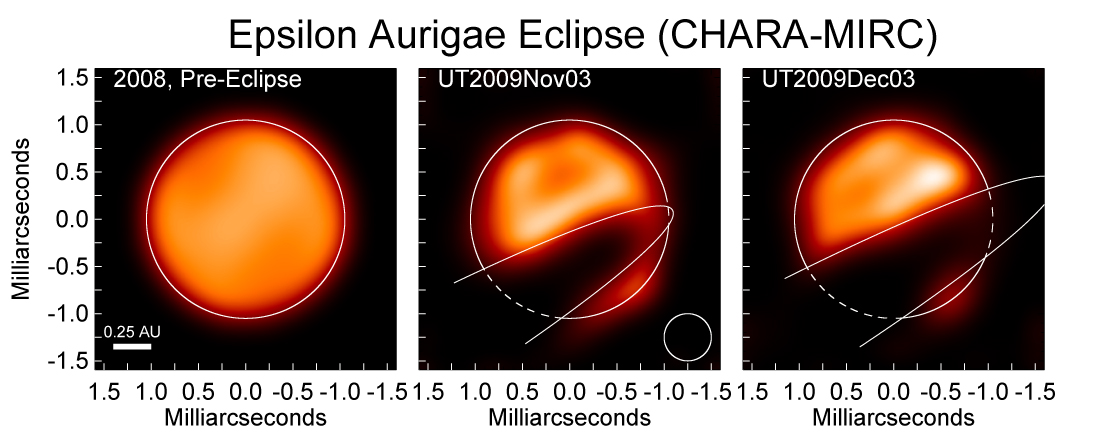
Eclipse of Epsilon Aurigae by dusty disk.
Imre Bartos moved away from classification to discuss potential electromagnetic counterparts to black hole-black hole mergers. Specifically, stellar mass black holes near the center of galaxies are more likely to collide within only a million years due to friction. Richard Ignace discussed the polarization of Epsilon Aurigae. This odd binary undergoes eclipses about once every quarter of a century, when a dusty disk passes in from of the primary star, as shown below.
Tomomi Otani explained how we can look for planets and other companions around post main sequence stars, or stars which have finished burning hydrogen. One of the six targets (named PG-1219+534) from her survey in fact has a planet which has survived its host star’s drastic expansion as it reached the red giant branch. Finally, Paula Szkody explained the exotic light curves of cataclysmic variables found with K2. These detailed observations allow us to understand previously unseen bumps and wiggles in the light curves due to the complex physics driving these systems.
The Limits of Scientific Cosmology: Historical and Cosmological Context (by Gourav Koullar)

Karl Popper was everywhere today, being invoked by both Matt Stanley and Sean Carroll.
The second session of this forum constituted a series of talks aimed at setting the premise for our current understanding of the universe, and the very story of how cosmology came to be a science. Matt Stanley gave us an extraordinary tour of the last 150 years of scientific tendencies to create models of the universe. John Tyndall, James Clark Maxwell, Ernst Mach all joined the party, as we moved towards the Friedman-Lemaitre-Robertson-Walker model and Einstein’s tweaks to his field equations in General Relativity. Stanley gave due credit to the Steady State Cosmology ‘movement’, since it was using Popperian falsifiability that Hermann Bondi and Fred Hoyle established the rules of how a theory of the universe should look like. Even today, as we wage an internal battle between ‘Adaptive Optimism’ and ’Pessimistic Induction’ as scientists, our willingness understand the cosmos stays strong.
Virginia Trimble: old skool (& slightly off the wall) #aas228 pic.twitter.com/W31PtbC0in
— chrislintott (@chrislintott) June 14, 2016
Richard Dawid followed this up with a new philosophical theory of science, putting an emphasis on non-empirical confirmation of theories, and tracking evolution of credence (e.g. in a Bayesian manner) instead of definitive ‘true’ or ‘false’ answers to fundamental questions. Virginia Trimble brought the afternoon discussion to a conclusion by discussing a very unique empirical observation: whenever a community has come at a juncture where the choice has been between one or many, finite or ‘infinite’ (in a non-mathematical sense!), the latter has always won the debate. Whether we talk about a small Ptolemaic geocentric universe or a larger-than-life Copernican heliocentric solar system, the Milky way being the only galaxy vs. us being one of many, or a static versus an accelerating universe, the latter has been victorious. Hence Trimble asks, then who are we to stop at a universe, with existing ideas of a multiverse!
If you put 3 cosmologists is a room, two of them will say the 3rd doesn’t understand Malmquist bias. — Virginia Trimble #aas228
— Risa Wechsler (@RisaWechsler) June 14, 2016
Stay tuned for tomorrow’s parts III and IV of The Limits of Scientific Cosmology!
Plenary Session – Things That Go Bump in the Night: The Transient Radio Sky (by Susanna Kohler)
This afternoon plenary was given by Dale Frail of the National Radio Astronomy Observatory, who injected some pop culture into our day by introducing radio transients as some of the night’s terrors that Game of Thrones warned us about.
Dale Frail opens his plenary talk with “the night is dark and full of terrors”. #GoT #aas228 pic.twitter.com/uWGAnZd0X9
— astrobites (@astrobites) June 14, 2016
Transient sources are those that change, often rapidly, while we observe them. Radio transients are an incredibly broad category, spanning sources that can vary on fraction-of-a-second timescales (like pulsars) to year-long timescales (like jets from active galactic nuclei).
“Radio transients” as a category includes a lot of different sources! #aas228 pic.twitter.com/4x5OoYalqv
— astrobites (@astrobites) June 14, 2016
In general, Frail emphasized, the radio sky is quiet; radio transients are actually quite rare. But the list of potential radio transients, while including many known sources, also pushes into more speculative territory. Interesting examples include the mysterious Fast Radio Bursts (FRBs) discussed in yesterday’s plenary by Maura McLaughlin, and electromagnetic counterparts to gravitational waves.
Frail gave an overview of what we currently know about the radio transients that we’ve observed — including where we find them, what energies they span within the radio band, and what timescales they vary on.
He also discussed the different strategies used to learn more about the transient radio sky: we’re generally faced with the choice to either “be a cartographer” by using all-sky surveys to search for new transients, or “be a buccaneer” by strategically following up on survey leads to localize and identify transient sources.
Frail argued that the way forward is to combine these strategies: use all-sky radio surveys coupled with rapid multi-wavelength follow-up. This combines the serendipitous element of surveys — the ability to find things we weren’t necessarily searching for, such as the first pulsar signal ever detected — with the higher-precision tools needed to identify what we’re looking at.
Plenary Session – MAVEN Observations of Atmospheric Loss at Mars (by Meredith Rawls)
One of the best ways to learn about exoplanets is by carefully studying planets much closer to home. Shannon Curry emphasized this throughout her presentation about Mars’ atmosphere, which was motivated by the fact that Mars used to be a warmer, wetter planet. The Mars Atmosphere and Volatile Evolution orbiter (MAVEN) arrived at Mars in September 2014 and has been collecting many kinds of data about the Martian atmosphere ever since.
Several different processes are responsible for Mars losing parts of its atmosphere to space. Because Mars is a relatively small planet, it has had a difficult time holding onto its atmosphere over the history of the Solar System. Neutral particles, ionized particles, and even water vapor all find unique ways to escape the grip of Mars’ gravity. In addition, the variable effects of the Solar wind and other space weather affect what kind of material is lost.
Modeling how the Sun eats away at Mars’ atmosphere is easy, just model all of these things at once #aas228 pic.twitter.com/A71G4rh48q
— Meredith Rawls (@merrdiff) June 15, 2016
Beyond the detailed physics and chemistry illustrated above, the differences in Mars’ atmosphere as a function of the Sun’s behavior are a challenge to observe because the Sun is experiencing a quiet solar maximum with relatively few coronal mass ejections. Thanks to MAVEN, we have the first opportunity to measure these processes up close. Mars serves as an excellent analog for exoplanet hydrogen loss and can tell us whether similarly-sized planets are likely to have the same fate.

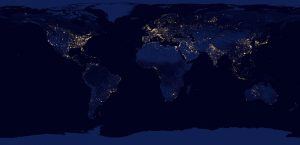
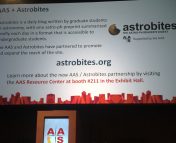

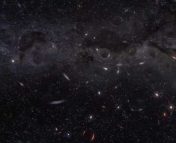

Trackbacks/Pingbacks